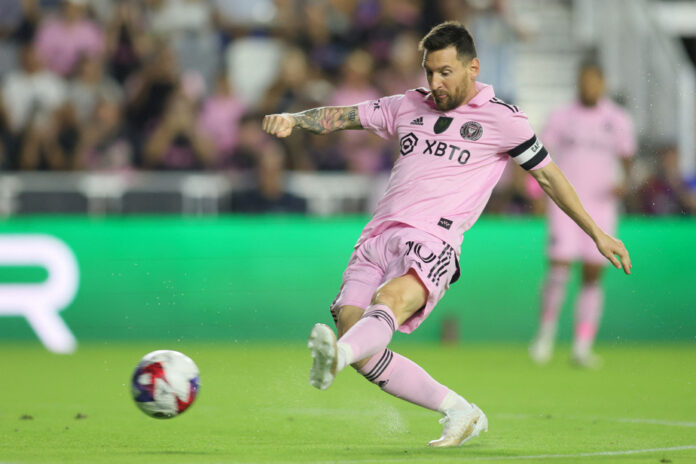There is absolutely a salary cap in MLS. The league rules in this regard are particularly complicated. But the arrival of Lionel Messi could change things. Let’s stick to the basics for the sake of brevity. In 2023, the salary cap was set at US$5,210,000. The minimum salary for a senior player was $85,444. The maximum salary was $651,250. You’re probably familiar with the designated player rule, which allows clubs to sign three players whose salary exceeds the said maximum of $651,250. The excess amount does not appear on the club’s payroll. CF Montreal has one: Victor Wanyama, paid $1,800,000 in total, if we rely on figures provided by the MLS Players Association.
Messi? The Argentinian receives an annual compensation of 20 million from Inter Miami. So far, it’s a lot, but it’s okay, especially for the best player in history. But it is thanks to its agreements with MLS as well as its partners Adidas and Apple TV that we are entering hitherto unexplored territory in the world of sports contracts. And it is by virtue of this agreement, which is estimated at 150 million in total over two and a half years, that Inter Miami managed to get the Argentine world champion. Furthermore, several voices have been raised in recent months for the league to simplify its salary rules. This could help teams that have the means to improve their squad in a concrete way and increase the quality of the product on the field. The arrival of Messi could therefore lead MLS to make an expected update to its rule book.
Unless you conduct in-depth scientific research, it is difficult to answer your question. An interesting avenue: the analysis of the nominations for the Calder Trophy. In the last 10 years (so out of 30 candidates), 8 were European, or 26.7%, which is relatively close to the European representation in the NHL, just under 30% this season. A caveat is necessary, however. Several of these candidates (Kirill Kaprizov, Artemi Panarin, Dominik Kubalik) arrived at the age of 23 or 24 in the NHL, after a few seasons among professionals in Europe. Others, like Moritz Seider and Ondrej Palat, had previously played in the American League. This data therefore suggests that in the short term, a European may experience a slower start in the NHL. However, teams draft with much longer-term goals in mind.
Players like Byron, who have a one-way contract, receive their full NHL salary if they are transferred to the American League. So these paper transactions made no difference to Byron’s pay. Players with a two-part contract (therefore with a lower salary planned for the American League) actually receive a lower salary in the American League, in principle.
There is a very simple basic rule to understand the management of the dial. As long as the ball is in play, time runs out. This means that if the quarterback throws a pass that is not caught, or the player carrying the ball goes out of bounds, the clock stops. For any other play that ends with a tackle on the field, whether it’s a run or a pass, the clock continues.
The NHL has kept this statistic since 2009. In the 14 years since then, there have been 13 goals in such a situation. No team has scored more than one in the same season, which therefore answers the second part of your question!















